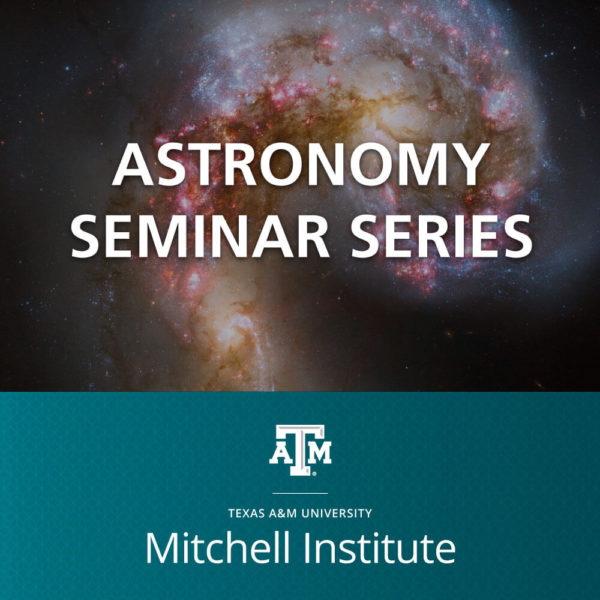
Speaker:
Angela Speck (University of Texas, San Antonio)
Location:
Address:
Mitchell Institute for Fundamental Physics & Astronomy
College Station, Texas 77843
We all know that dust is an important constituent in many astrophysical environments; however, to truly understand its impact on its surrounding we need to know its precise nature. In order to determine the precise nature of cosmic dust we use combination of multi-wavelength spectroscopy, imaging, laboratory data and modeling. Dust grains scatter, absorb and re-radiate light according to their optical properties, which are sensitive to e.g. the temperature, chemical composition, size, shape, and lattice structure of the dust grains. For example, graphite and diamond are both crystalline forms of carbon, and will form under very similar conditions, but their interactions with light are very different. Optical functions for amorphous silicates are used to model and interpret a wide variety of astrophysical environments including circumstellar dust around evolved stars and in disks around young stellar objects (YSOs), and active galactic nuclei (AGN).
However, the most widely used optical functions in the literature have been derived using compositionally and structurally disparate materials, and were prepared with inconsistent methodology, kludging observational data and laboratory data with different experimental methods to populate the wavelength space. This presentation will give an overview of the how we apply basic physics concept to extracting optical functions from lab samples and modeling different dusty environments. In addition, we present new optical functions and extinction cross-sections derived from mid-UV to far-IR laboratory transmission spectra of cosmic abundance silicate glass. The advantages of using these data are that our glass sample was synthesized especially with cosmic (solar system) abundances in mind and excludes iron. We compare these results to other popular optical functions used to model amorphous silicates, both directly and in application to HD 161796, a spherically symmetric, O-rich system with a visible central star, optically thin dust shell, and radiation field intermediate to AGB and PN class targets.
Copyright © 2024. All rights reserved, Texas A&M University Trademark | Texas A&M University, College Station, Texas 77843